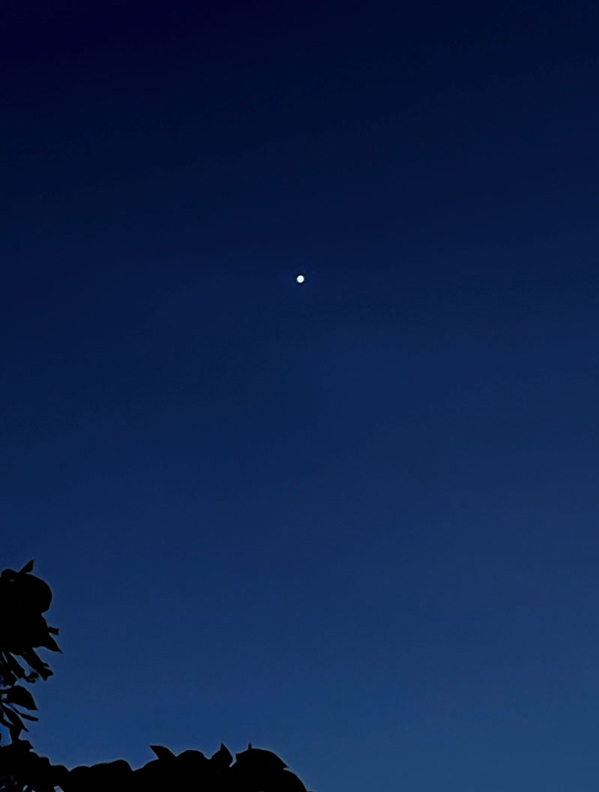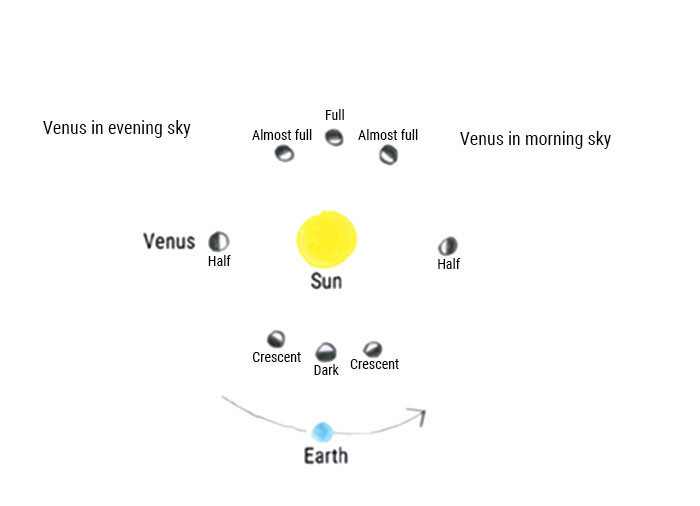Science Snippet:
Explore Venus

At the time of my last post, Venus was 65 million miles away. Now it has come closer and is only about 60 million miles away. Imagine that you start walking down the Pacific coast of North America. When you’ve traveled along the whole coast from north to south go a mile inland and repeat your walk. Keep doing this until you reach the Atlantic coast. Repeat the process for all the other continents and islands including Antarctica. Now walk around the earth at the equator 80 times. Congratulations! You’ve traveled the distance from Earth to Venus. I have some good news, however. Venus is currently getting nearer to Earth. By August, Venus will be only 26.8 million miles away. To cover that distance you would only have to walk up and down North America and Asia.
It would seem that when Venus is at its closest point to us, it should be at its brightest in our sky. But it isn’t. Venus will next be at its brightest in mid-July. In August, it won’t be visible at all. When Venus is closest to us, it is between the sun and Earth, so the dark side of Venus is facing us. And besides, at that point in its orbit, it appears too close to the sun to be visible in our sky.
If you have a pair of binoculars or a telescope, you can see that Venus shows phases in our sky. These phases are caused by the planet’s orbit, which is closer to the sun than Earth’s orbit. Venus shines from sunlight reflected off its surface. When Venus is on the far side of the sun from Earth, it is in full phase and would look like a completely illuminated disk in the sky, except that its position in our sky is too close to the sun to be visible from our point of view. Venus’ phase diminishes as it draws closer to us until it is in the crescent phase, at which point it is at its brightest in our sky. As its orbit continues, it enters its dark phase and again rises and sets with the sun, making it impossible for us to see. In about a month, Venus reappears on the other side of the sun in our sky. It will then move from crescent back toward full again, when it disappears from view behind the sun.
In July, Venus will be in the crescent phase. This is the best time for trying to see Venus’ phase in binoculars. Try to find it low in the western sky about a half hour after sunset while it is still light. As July progresses, you’ll notice that Venus gets harder and harder to find in the evening sky. Eventually, it won’t be visible at all. But by late August, Venus will once again be visible, this time low in the morning sky. Don’t confuse Venus with Jupiter which will also be visible in the early morning sky, high overhead. Tracking Venus’s position and its phase is a fun way to witness the motion of the planets in the solar system.
When Venus is at its brightest, it is fairly easy to observe it in the daytime sky if you know where to look. (Although binoculars or a telescope might make it easier, you shouldn’t use them. Using optical equipment in the daytime is not a good idea because you might look at the sun by accident.) This is easiest in the morning. Start watching Venus shortly before sunrise. Try to position yourself so that Venus appears near the top of a landmark such as a tree. As the sky brightens, you should be able to continue finding it. Even after sunrise, it should be fairly easy to see. Without a landmark, you might lose Venus. Once you’ve lost it, you might not be able to find it again.
If you can see the phases of Venus, you can use the diagram below to determine its position in relation to Earth. The same amount of Venus is always lit by the sun. Depending on Venus’ position in relation to Earth, we can see more or less of the lit surface.

(For more details on the physical characteristics of Venus, see my astronomy challenge post from last year.)
